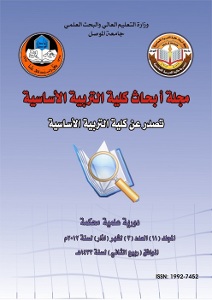The Use Of High and Low Temperatures In ControllingTribolium confusum Duv. (Tenebrionidae : Coleoptera) and Oryzaephilus surinamensis (L.)(Silvanidae : Coleoptera)
Abstract
Tribolium confusum Duv. Oryzaephilus surinamensis (L.) . 40 , 50 , 60 23 , 47 , 82% 26 , 50 , 82% , 15 , 30 , 45 , 60 18, 48, 56, 80% 21 , 49 , 59 , 83% , ( , , ) 52 , 54 , 45% 53 , 57 , 46% , 60 30 100% . 5 , -5 , - 15 T. confusum 32 , 40 , 44% 35 , 44 , 48% , 15 , 30 , 45 , 60 28 , 36 , 41 , 50% 31, 38 , 46, 54% . 69% 71% . Results of using high and low temperature against T. confusum and O. surinamensis showed. that the rates killing of percentage were proportionated positively with the increase of temperature 40 , 50 , 60 C which was 23 , 47 , 82% respectively for the confused flour beetle , wile it was 26 , 50 , 82% for the saw toothed grain beetle , Increasable in killing portion were happened by the increasing of exposure period 15 , 30 , 45 and 60 min. , caused of 18 , 48 , 56 and 80% mortality respectively for the confused flour beetle where as give 21 , 49 , 59 and 83% mortality respectively for the saw toothed grain beetle. while the rate of killing percentage for the both insects stage (larvae , pupae , adult) were variable , and it was 52 , 54 , and 45% respectively for the confused flour beetle stages , but for the saw toothed grain beetle it was 53 , 57 and 46% respectively . Statistical analysis of results appeared that the exposure period of 30 min. with 60 C was enough to gave complete death for the all stages of the both insects .In regarding to the low temperature , results showed that the killing percentage rates were increased by decreasing of temperature to 5,-5, -15C , which was to 32 , 40 and 44% , respectively for the confused flour beetle and 35 , 44 and 48% respectively for the saw toothed grain beetle.






